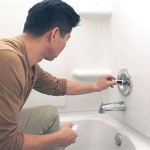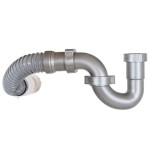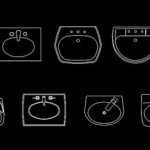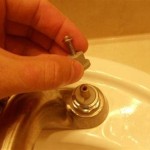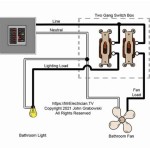Can You Vent a Bathroom Fan Into the Attic?
Venting a bathroom exhaust fan directly into an attic space is a common practice, but one fraught with potential problems. While it might seem like a straightforward and cost-effective solution, it can lead to significant issues with moisture damage, mold growth, and compromised insulation. This article explores the ramifications of venting a bathroom fan into the attic and discusses safer, more effective alternatives.
Problems with Venting into the Attic
The primary purpose of a bathroom exhaust fan is to remove excess moisture and humidity generated during showering or bathing. When this moisture-laden air is vented directly into the attic, it can condense on the cooler surfaces of the roof sheathing, rafters, and insulation. This condensation creates an ideal environment for mold and mildew growth, potentially leading to structural damage and health concerns.
Several key issues arise from venting bathroom exhaust fans into the attic:
Key Issues:
1. Moisture Damage: Condensation accumulating on wooden components weakens their structural integrity over time, potentially leading to rot and decay. This can affect rafters, roof decking, and other supporting structures.
2. Mold and Mildew Growth: The humid environment created by trapped moisture promotes the rapid growth of mold and mildew. These fungi can damage building materials and release spores into the air, potentially causing respiratory problems and allergic reactions.
3. Insulation Degradation: Wet insulation loses its effectiveness, reducing its ability to regulate temperature and potentially increasing energy costs. Furthermore, damp insulation provides a fertile breeding ground for mold.
4. Increased Risk of Ice Dams: In colder climates, warm, moist air escaping into the attic can melt snow on the roof. This meltwater can refreeze at the colder eaves, forming ice dams that prevent proper drainage and can cause water to back up under shingles, leading to leaks and further damage.
5. Potential for Pest Infestation: A damp, decaying attic provides an attractive habitat for insects and rodents, exacerbating existing problems and potentially introducing new ones.
6. Voiding Roof Warranties: Many roofing manufacturers specifically state that improper ventilation, including venting humid air into the attic, can void warranty coverage.
7. Building Code Violations: Most building codes require bathroom exhaust fans to be vented directly outdoors to prevent the problems associated with attic venting.
Proper Venting Techniques
To avoid the pitfalls of venting into the attic, proper ventilation techniques should be employed. These methods ensure that moisture is effectively removed from the bathroom and expelled safely outside the home.
Effective Ventilation Methods:
1. Vent Through the Roof: This involves running a duct from the exhaust fan through the roof and terminating with a properly sealed roof vent cap. This is generally considered the most efficient method, as it provides a direct path for moisture removal.
2. Vent Through a Gable Wall: If the bathroom is located on an exterior wall, the duct can be routed through the wall and terminated with a wall vent. This method is often simpler and less expensive than roof venting, but may not be feasible in all situations.
3. Vent Through a Soffit: While less common, soffit venting can be used in certain circumstances. However, it is crucial to ensure the soffit vent is properly designed and located to prevent recirculation of exhaust air back into the attic.
Regardless of the chosen method, proper ductwork installation is critical. Ducts should be as short and straight as possible to minimize air resistance and maximize airflow. All joints should be sealed with duct tape to prevent leaks, and insulated ducts are recommended to prevent condensation within the ductwork itself.
Importance of Professional Installation
While venting a bathroom fan might seem like a DIY project, professional installation is highly recommended. A qualified contractor can assess the specific situation, determine the most appropriate venting method, and ensure proper installation in accordance with building codes and best practices. They can also identify potential issues and recommend solutions to prevent future problems.
Correctly venting a bathroom exhaust fan is essential for maintaining a healthy and structurally sound home. By understanding the risks associated with attic venting and implementing proper ventilation techniques, homeowners can protect their investment and ensure a safe and comfortable living environment.

Bathroom Vent Piping To Near Exterior Inspecting Hvac Systems Internachi Forum

Bathroom Ventilation And Attic Issues 2024 08 21 15 31 05

Venting A Bath Fan In Cold Climate Fine Homebuilding

Installing A Bathroom Fan Fine Homebuilding

Bathroom Fan Venting Tips Gui

Exhaust Fans Venting Into Attics Cherry Home Inspections

Bathroom Exhaust Fan Venting Into Attic Diy Home Improvement Forum

Bathroom Exhaust Vents In Your San Antonio Area Home Jwk Inspections

Can Your Bathroom Fan Vent Into The Attic Or Soffit Beantown Home Improvements Inc

Bathroom Duct Venting
Related Posts
